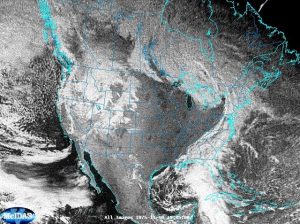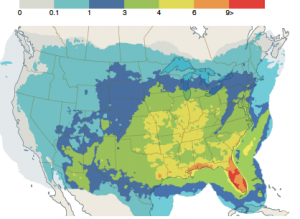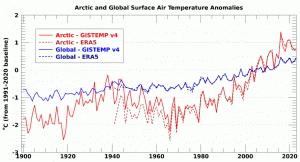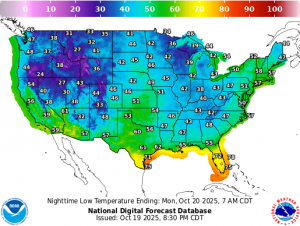A gale is a sustained wind between 39 mph and 54 mph. Gales are usually caused by large differences in the air pressure between a low pressure system and a strong high pressure system. Gale winds are common in November on the Great Lakes.

This week marks anniversaries of some strong November gales in the Great Lakes region. The most famous of these include the White Hurricane (Nov. 7-10, 1913), the Armistice Day Blizzard (Nov. 11, 1940), the Edmund Fitzgerald Storm (Nov. 9-10, 1975) and the storm Nov. 10-11, 1998.
The White Hurricane, also referred to as the Big Blow and the Freshwater Fury, resulted in more than 250 people dying. Nineteen ships were destroyed and 19 others were stranded.
The Armistice Day Blizzard dropped 16.7 inches of snow in Minneapolis/St. Paul. The cyclone intensified rapidly and was accompanied by a very intense surface cold front that quickly dropped the temperatures as much as 50 degrees Fahrenheit in parts of the Midwest. This rapid drop in temperature caught many people by surprise, and more than 150 people perished as the storm moved across the Great Lakes region. The apple growing industry in Iowa was destroyed. Additionally, 1.5 million turkeys intended for Thanksgiving dinner across Minnesota and Wisconsin perished from exposure to the cold conditions.
The Edmund Fitzgerald Storm achieved grisly fame through its association with the sinking of the mammoth ore freighter and the loss of its 29 crew members. That storm also was accompanied by extremely strong winds and rapid intensification over the midcontinent. It was memorialized by Gordon Lightfoot’s ballad “The Wreck of the Edmund Fitzgerald.”
The Nov. 10-11, 1998, storm underwent a six-hour period in which its minimum sea-level pressure dropped 15 mb, and 10 deaths were attributed to the windstorm.
Steve Ackerman and Jonathan Martin, professors in the UW-Madison department of atmospheric and oceanic sciences, are guests on WHA radio (970 AM) at noon the last Monday of each month. Send them your questions at stevea@ssec.wisc.edu or jemarti1@wisc.edu.





